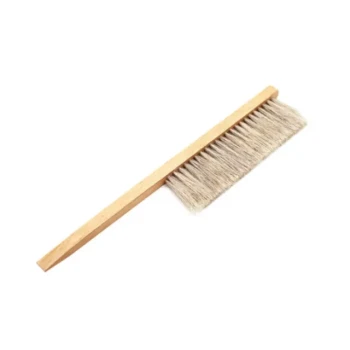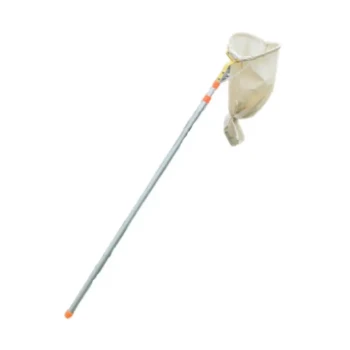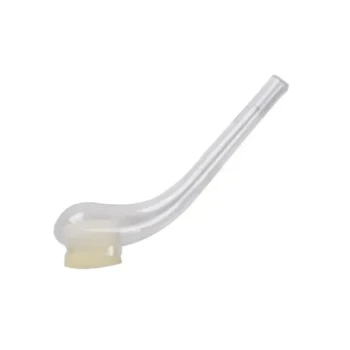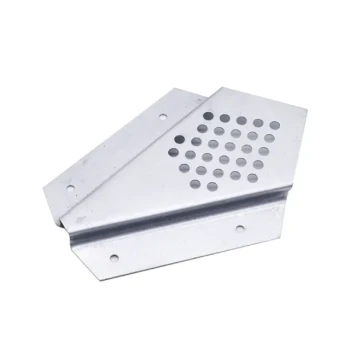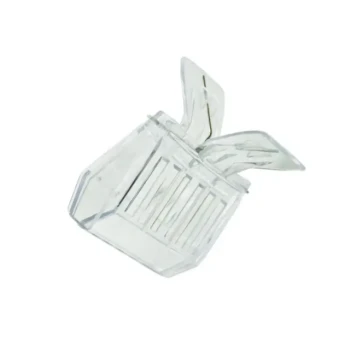A well-organized beekeeping toolkit is your most critical asset for successful hive management. Having every tool you need at arm's length transforms an inspection from a stressful scramble into an efficient, calm process. It prevents the critical error of leaving a hive open and vulnerable while you search for a forgotten item, reducing stress on both you and your bees.
The true value of an organized toolkit isn't just about convenience. It's about shifting your role from a reactive intruder to a proactive, systematic caretaker, which fundamentally improves the health of your colony and your effectiveness as a beekeeper.
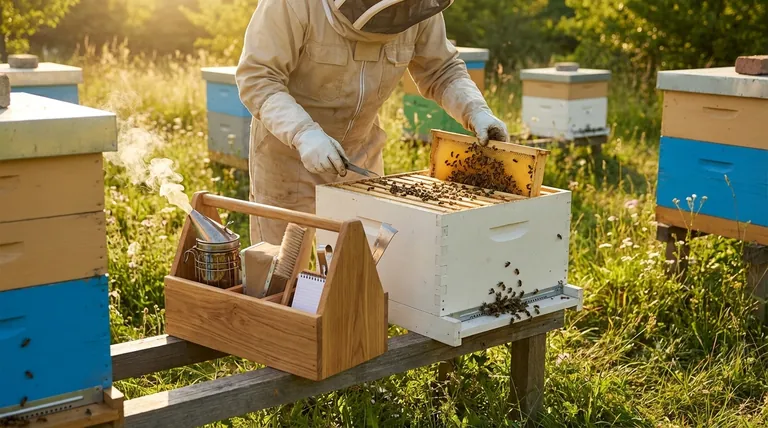
From Reactive Scrambling to Proactive Inspection
A disorganized approach to inspections creates unnecessary problems. When your tools are in disarray, you introduce chaos and stress into a delicate environment.
The Cost of Disruption
Forgetting a key tool, like your hive tool or smoker fuel, forces you to stop mid-inspection. Leaving the hive open while you retrieve it breaks your concentration and agitates the colony, making them more defensive.
Promoting Calmness (For You and the Bees)
When you have everything you need, you are calmer. Your movements become more deliberate and gentle. This calm energy is transferred to the bees, who are highly sensitive to vibration and jerky movements, resulting in a much safer and more pleasant experience.
Enabling Systematic Observation
An organized toolkit supports a consistent, repeatable inspection routine. By following the same steps every time, you are far less likely to miss crucial observations, such as the early signs of disease, the presence of queen cells, or a failing queen.
Increasing Efficiency and Reducing Exposure
The goal is to get in and out of the hive with purpose. An efficient inspection minimizes the time the brood nest is exposed to the elements and disrupts the colony's internal temperature regulation and work schedule as little as possible.
What an "Organized System" Actually Looks Like
Your toolkit should be more than a random collection of items; it should be a purpose-built system designed for your workflow.
The Core Non-Negotiables
These are the items you must have for every single inspection. A dedicated bucket, box, or beekeeping bag is essential for keeping them together.
- Protective Gear: Veil, suit, and gloves.
- Smoker & Fuel: Ensure it's lit and producing cool, white smoke before you approach the hive.
- Hive Tool: Your primary tool for prying apart frames and boxes.
- Bee Brush: For gently moving bees off frames.
The "Good to Have" Extras
As you gain experience, your kit will expand to include tools for specific situations.
- Queen Catcher or Clip: For safely isolating the queen.
- Notebook & Pen: To record observations for future reference.
- Frame Perch: A bracket that hangs on the side of the hive box to hold frames.
- Entrance Reducer: To manage hive access for weaker colonies.
Understanding the Pitfalls
Simply owning the tools isn't enough. True organization involves avoiding common mistakes that can undermine your efforts.
Over-packing vs. Under-packing
Bringing too many unnecessary tools creates clutter around the hive, which can be just as disruptive as forgetting an essential one. The goal is a curated kit with exactly what you need for the day's task, not a mobile workshop.
Forgetting Tool Maintenance
An organized kit is a maintained kit. A smoker clogged with creosote, a hive tool covered in old propolis, or a dead lighter are just as useless as tools left in the garage. Clean and prepare your tools after each use.
The Myth of the "Perfect" Kit
Your ideal toolkit is personal and will evolve with your skills. Don't simply copy another beekeeper's setup. Build your system based on your specific needs, the tasks you perform most often, and what makes you feel confident and prepared.
Making the Right Choice for Your Goal
Your toolkit should directly support your beekeeping objectives.
- If you are a new beekeeper: Start with a minimal kit containing only the core non-negotiables to build muscle memory and a consistent, simple routine.
- If you are managing multiple hives: Use a dedicated, portable beekeeping box or bag that you can easily carry between apiaries to ensure consistency and save time.
- If your goal is advanced tasks like splits or queen rearing: Prepare a specialized kit for that specific task, adding items like grafting tools, cell cups, or small mating nucs ahead of time.
A thoughtfully organized toolkit is the foundation upon which confident, effective, and enjoyable beekeeping is built.
Summary Table:
| Toolkit Goal | Key Benefit |
|---|---|
| Proactive Inspection | Shifts from reactive scrambling to systematic care. |
| Calmness & Safety | Reduces stress for both beekeeper and bees. |
| Efficiency | Minimizes hive exposure time and disruption. |
| Systematic Observation | Helps catch early signs of disease or queen issues. |
Ready to build your efficient, professional beekeeping toolkit?
For commercial apiaries and distributors, having the right equipment is non-negotiable for success. HONESTBEE supplies durable, high-quality beekeeping supplies and equipment through wholesale-focused operations. We help you equip your team with the tools needed for calm, effective hive management at scale.
Contact HONESTBEE today to discuss your wholesale supply needs and build a toolkit that supports your operational goals.
Visual Guide
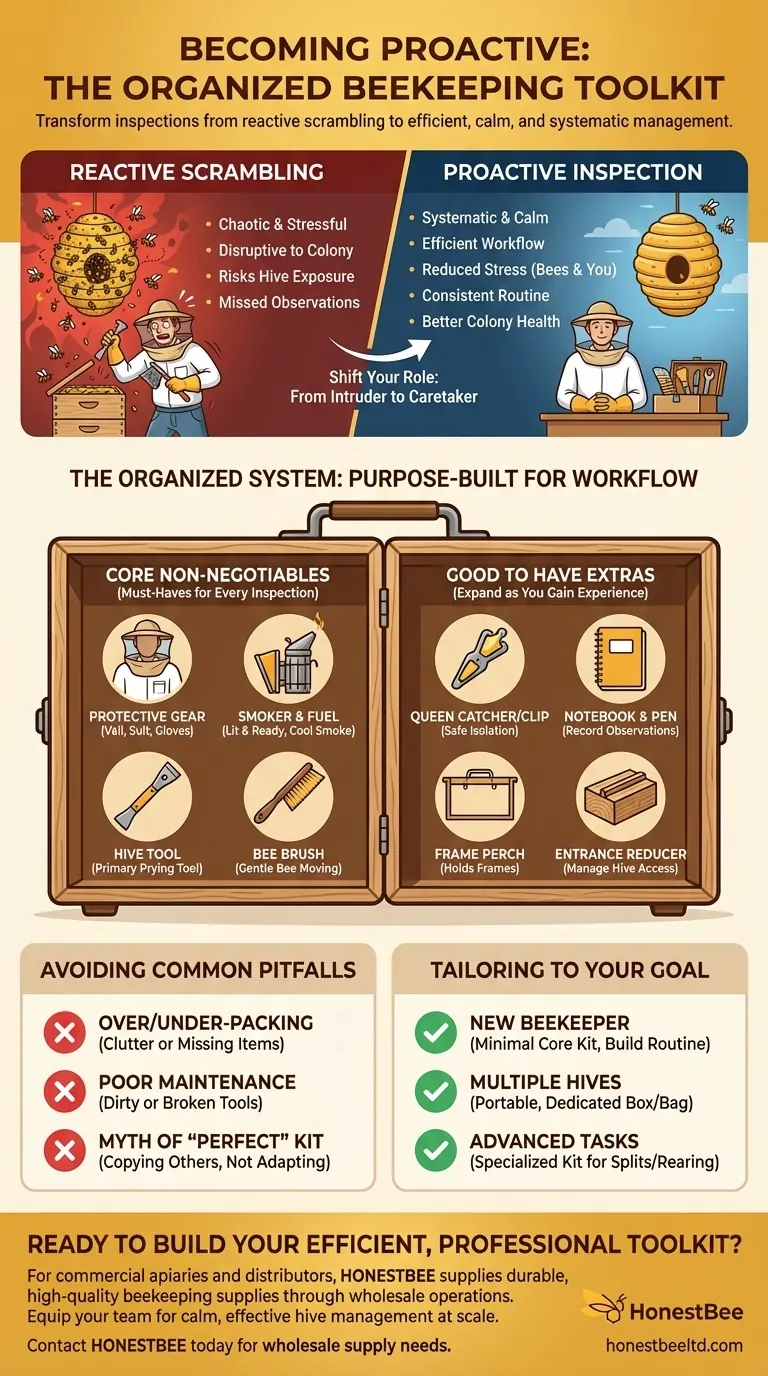
Related Products
- Wooden Bee Brush with Double-Row Horsehair Bristles
- Wholesales Dadant Size Wooden Bee Hives for Beekeeping
- Long Langstroth Style Horizontal Top Bar Hive for Wholesale
- Professional Engraved Round Hive Number Tags for Beekeeping
- Professional Wide Blade Honey Scraper for Beekeeping and Honey Processing
People Also Ask
- What is the function of a bee brush in beekeeping? Master Gentle Bee Handling for Hive Success
- What should be done if the swarm is situated on the bottom of a tree limb? A Guide to Methodical Bee Capture
- What is a bee brush and how is it used in beekeeping? A Guide to Gentle Bee Handling
- What are some optional tools that can be useful in beekeeping? Boost Efficiency & Hive Health
- What are the characteristics of the bristles on a bee brush? Designed for Gentle Persuasion, Not Force
